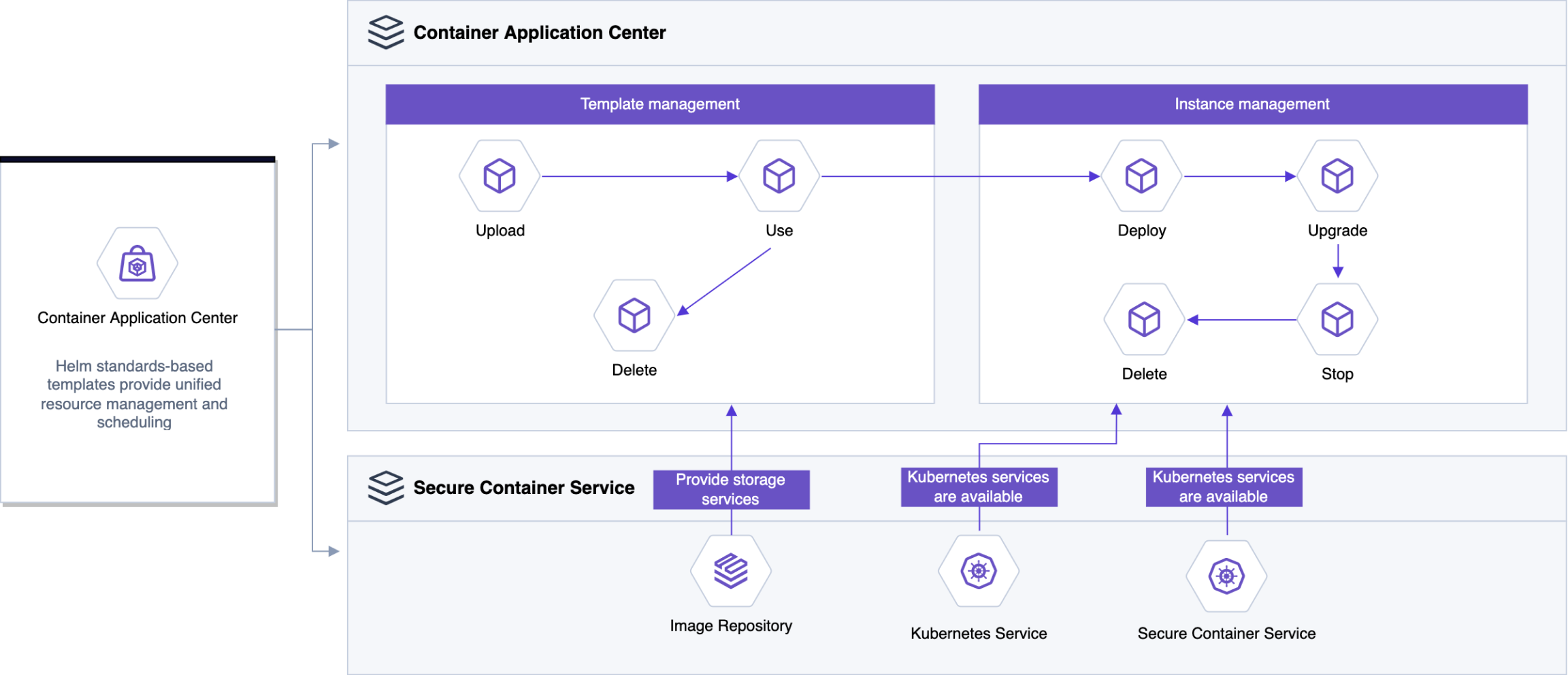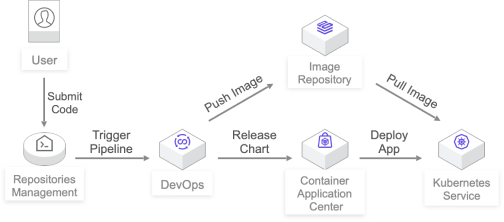
Templates based on Helm standards provide unified resource management and scheduling.

It is achieved through rapid application deployment and post-management through templates.

The platform has sample templates built in, or upload your own.
Templates based on Helm standard provide unified resource management and scheduling, which effectively realizes the rapid deployment and post-management of templates, and greatly simplifies the installation and management process of Kubernetes resources. It is possible to use the sample templates provided by the platform directly, or upload your own templates.


The packaged application template can deploy complex applications with one click, and facilitate the unified management of deployment resources.

It supports tenant isolation and sharing of application templates. Cloud administrators can publish shared templates for all tenants, and each tenant can publish private templates.

It seamlessly integrates with Kubernetes container services, DevOps and other cloud products to provide a unified development experience and reduce usage costs

When the application is split into multiple microservices, each service will be deployed independently. Operation and maintenance personnel can define multiple services and related configuration resources through chart, realize one-click deployment, and uniformly view and manage resources.

Operations want to automate the deployment of the platform when the application version is updated, which requires the DevOps pipeline to automate the commit - > pull source - > build and release images - > release application templates - > deploy application templates.

Instances can be upgraded when a new version of the application template is released, or when you want to adjust the application's configuration parameters. When a new version of the deployed instance fails or does not meet business expectations, you can specify the historical deployment version and roll back the instance with one click.